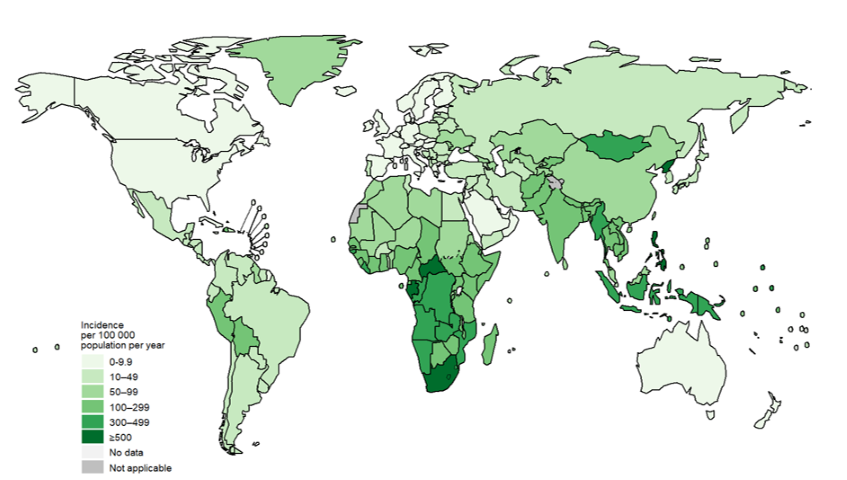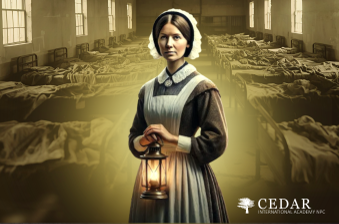Guest Speaker – World Tuberculosis Day
Every year, on 24 March, World TB Day is observed to increase public awareness of the serious health, social, and economic impact of tuberculosis (TB), and to strengthen efforts to eliminate the global TB epidemic.
The date commemorates when Dr. Robert Koch revealed his discovery of the bacterium responsible for TB, in 1882 - a breakthrough that paved the way for diagnosing and treating the disease.
Figure showing estimated TB incidence rates, 2021 (from WHO, 2022)
Dr. Rebecca Escach visited Cedar and delivered an engaging and informative presentation on tuberculosis (TB).
We learned that anyone can contract TB, although certain groups are at higher risk. These include individuals with weakened immune systems, those who have had previous TB infections, people who have been in close contact with someone who has TB, and those living in under-resourced communities.
TB spreads through actions such as coughing, sneezing, speaking, singing, and spitting—especially in enclosed, crowded spaces.
When TB bacteria are inhaled, the immune system may either destroy them or contain them in a dormant state, known as latent TB. In this form, a person does not feel sick, shows no symptoms, and cannot spread the disease. However, since the bacteria remain in the body, the disease can become active later. If the immune system fails to control the bacteria, active TB develops, causing illness and making the person contagious.
TB symptoms are similar to those of the common flu, but they are more persistent and can last for weeks or even months. Symptoms include a persistent cough (sometimes with blood), fever, night sweats, loss of appetite, weight loss, fatigue, and swollen neck glands.
It’s a common misconception that TB only affects the lungs. In fact, extrapulmonary TB can spread to other parts of the body, including the lymph nodes, bones, brain, urinary system, heart, and abdomen.
The good news is that TB is both treatable and curable. Dr. Escach emphasized that treatment typically lasts six months or longer and must be completed to be effective.
There are also several ways to prevent TB. It’s important to get tested as soon as symptoms appear. Maintaining good hygiene, such as washing hands with soap, and ensuring proper ventilation in indoor spaces can help reduce the risk of transmission.







